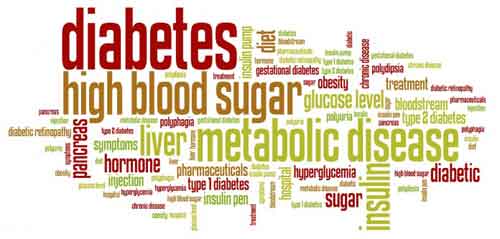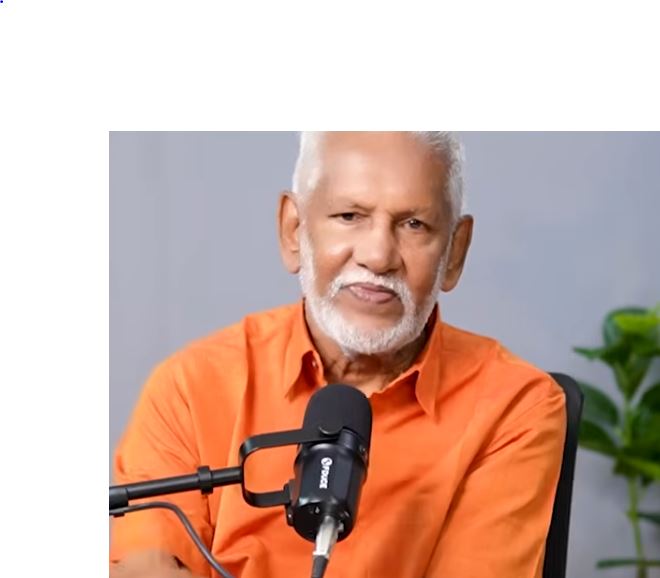What is diabetes?
Dr Hector Perera London
Diabetes is a serious life-long health condition that occurs when the amount of glucose (sugar) in the blood is too high because the body can’t use it properly. If left untreated, high blood glucose levels can cause serious health complications. There are two main types of diabetes: Type 1 and Type 2. They’re different conditions, caused by different things, but they are both serious and need to be treated and managed properly.
There are two types of diabetes, type 1 and type 2
Type 1 diabetes is a lifelong, autoimmune condition. Type 1 diabetes can affect anyone, at any age. It isn’t caused by poor diet or an unhealthy lifestyle. In fact, it isn’t caused by anything that you did or didn’t do. There was nothing you could have done to prevent it.
In Type 2 diabetes, the body doesn’t make enough insulin, or the insulin it makes doesn’t work properly, meaning glucose builds up in the blood. Type 2 diabetes is caused by a complex interplay of genetic and environmental factors. Up to 58 per cent of Type 2 diabetes cases can be delayed or prevented through a healthy lifestyle. About 90 per cent of people with diabetes have Type 2.
Your immune system – which is meant to protect you from viruses and bacteria attacks and destroys the cells in your pancreas, called beta cells that produce insulin. We don’t yet fully understand why this happens.
What is insulin?
Insulin is crucial to life. When you eat, insulin is what moves the energy from your food, called glucose, from your blood into the cells of your body. When the beta cells in your pancreas fail to produce insulin, glucose levels in your blood start to rise and your body can’t function properly. Over time this high level of glucose in the blood may damage nerves and blood vessels and the organs they supply.
Is it hereditary?
Around 90 per cent of people with type 1 have no family history of the condition, and although other family members may carry the same ‘at risk’ genes, the overall risk of the condition for multiple family members is generally low.
What causes type 1 diabetes?
More than 50 genes have been identified that can increase a person’s risk of developing type 1, but genes are only part of the cause. Scientists are also currently investigating what environmental factors play a role. What is known is that, destruction of insulin-producing beta cells is due to damage inflicted by your immune system. Something triggered your immune system to attack your beta cells. Certain genes put people at a greater risk of developing type 1 diabetes, but are not the only factors involved. While there are no proven environmental triggers, researchers are looking for possible culprits, such as viral infections and toxins within our environment and foods.
Sugary drinks are such sweet sorrow
A study in the last issue of Diabetologia contributes further evidence to the harms of consuming to much sugar sweetened drinks. Using data obtained in the prospective EPIC-Norfolk study, Laura O’Connor and colleagues from Cambridge University show that for each 5% increase of a person’s total energy intake provided by sweet drinks including soft drinks, the risk of developing type 2 diabetes may increase by 18%. Conversely, replacing the daily consumption of one serving of a sugary drink with either water or unsweetened tea or coffee can lower the risk of developing diabetes by between 14% and 25%, so there is hope for those who see the error of their ways.
ONE MILLION PEOPLE IN UK UNAWARE THEY HAVE TYPE 2 DIABETES
More than one million people in the UK are now thought to have undiagnosed Type 2 diabetes, double the previous estimate.
New figures from Diabetes Health Intelligence, a strategic programme of Yorkshire and Humber Public Health Observatory, suggest 820,000 adults in England with diabetes are undiagnosed. Based on this model, Diabetes UK estimates that the figure rises to just over a million (1.1 million) when applied to the UK.
Truly alarming
Douglas Smallwood, Diabetes UK Chief Executive, said: “This new estimate of a million cases of undiagnosed Type 2 cases in the UK is truly alarming. Whilst screening of at risk groups has started, notably through the NHS Health Checks programme, it is clear there needs to be greater emphasis on successful delivery throughout the country.
“We urgently also need to improve diabetes prevention and awareness programmes around the country, coupled with vastly improved support for people to change their behaviours. Avoidable in so many cases, the Type 2 diabetes epidemic is a clear example of where the new government’s rhetoric of tackling health problems through prevention must be turned into action. Failure to act now means a bleak future of spiralling NHS costs and worsening public health.”
Over 40% of people unaware diabetes can lead to blindness
Over 40 per cent of British people do not realise that blindness is one of the major complications of diabetes, according to a survey published by Diabetes UK.
The survey of 1,994 adults aged 15 and over, conducted by Ipsos Mori, found that 41 per cent of people are unaware that diabetes can lead to blindness, as diabetes can lead to blood vessels to the retina of the eye becoming blocked, leaky or growing haphazardly.
This is despite the fact that, actually, diabetes is the biggest cause of preventable blindness among working age people in the UK and diabetes also puts people at increased risk of developing glaucoma (a build-up of pressure in the eye) and cataracts.
This is worrying because if people are unaware of the potentially devastating health complications among people with diabetes, they may not realise how important it is to make the healthy lifestyle changes that can reduce their risk of Type 2 diabetes (Type 1 diabetes, which accounts for about 10 per cent of diagnosed cases, is nothing to do with weight or lifestyle).
Nearly four Million Diabetics in Sri Lanka
The Diabetes Association of Sri Lanka (DASL) statistics reveals that there are nearly four million diabetics in Sri Lanka. The worst thing is some people are unaware that they have diabetic. The best thing is to get your blood and urine tested at a hospital or with a medical centre.
Almost one-fifth of the world’s people with diabetes live in South-East Asia Region, DASL said. According to the association, more and more young persons were being afflicted by the disease and though the number of people affected by diabetics was ever-increasing, the country had not yet taken serious steps to reduce the risk of diabetes. The prevalence of diabetes in the country had dramatically increased from around 16 per cent in 2009 to 20 per cent in 2014.
According to DASL, the prevalence of diabetes among urban population had increased from 12.1 per cent in 1996 to 16.4 per cent in 2008. Overall prevalence of some form of dysglycaemia had increased from 6.87 per cent in 1987 to 30 per cent in 2006. In 2011, 71.4 million people (8.3%) in South East Asia were affected by diabetes and 23.8 million people (2.8%) were affected by Impaired Glucose Tolerance (IGT).
Something to prevent diabetics
Overweight and lack of exercise were the main causes of diabetes among children, while family history, food habits and obesity were the main causes among adults. Adopting a healthy diet and increasing physical activity can prevent the development of Type 2 Diabetes up to 80 per cent.
PREVENTING TYPE 2 DIABETES
There is nothing we can do to prevent Type 1 diabetes. But around 3 in 5 cases of Type 2 diabetes can be prevented or delayed by maintaining a healthy weight, eating well and being active.
Do you know your risk of getting Type 2 Diabetes?
Did you know that 11.9 million people in the UK are at increased risk of developing Type 2 diabetes?
Anyone can get it. Type 2 diabetes is a serious health condition. It starts gradually, usually later in life, and because the symptoms may not be so obvious it might be years before you learn that you have it.
What is Insulin?
Insulin is a hormone made by the pancreas that allows your body to use sugar (glucose) from carbohydrates in the food that you eat for energy or to store glucose for future use. Insulin helps keeps your blood sugar level from getting too high (hyperglycaemia) or too low (hypoglycaemia).
The cells in your body need sugar for energy. However, sugar cannot go into most of your cells directly. After you eat food and your blood sugar level rises, cells in your pancreas (known as beta cells) are signalled to release insulin into your bloodstream. Insulin then attaches to and signals cells to absorb sugar from the bloodstream. Insulin is often described as a “key,” which unlocks the cell to allow sugar to enter the cell and be used for energy.
If you have more sugar in your body than it needs, insulin helps store the sugar in your liver and releases it when your blood sugar level is low or if you need more sugar, such as in between meals or during physical activity. Therefore, insulin helps balance out blood sugar levels and keeps them in a normal range. As blood sugar levels rise, the pancreas secretes more insulin.
If your body does not produce enough insulin or your cells are resistant to the effects of insulin, you may develop hyperglycaemia (high blood sugar), which can cause long-term complications if the blood sugar levels stay elevated for long periods of time.
Insulin Treatment for Diabetes
People with type 1 diabetes cannot make insulin because the beta cells in their pancreas are damaged or destroyed. Therefore, these people will need insulin injections to allow their body to process glucose and avoid complications from hyperglycaemia.
People with type 2 diabetes do not respond well or are resistant to insulin. They may need insulin shots to help them better process sugar and to prevent long-term complications from this disease. Persons with type 2 diabetes may first be treated with oral medications, along with diet and exercise. Since type 2 diabetes is a progressive condition, the longer someone has it, the more likely they will require insulin to maintain blood sugar levels. This not all about diabetics but for the time being, I think this is sufficient. Your comments are welcomed perera6@hotmail.co.uk




















